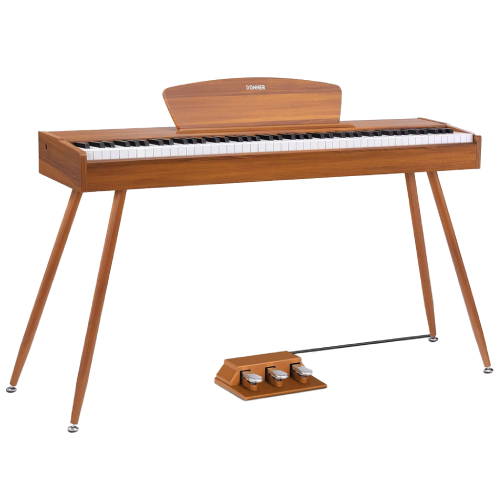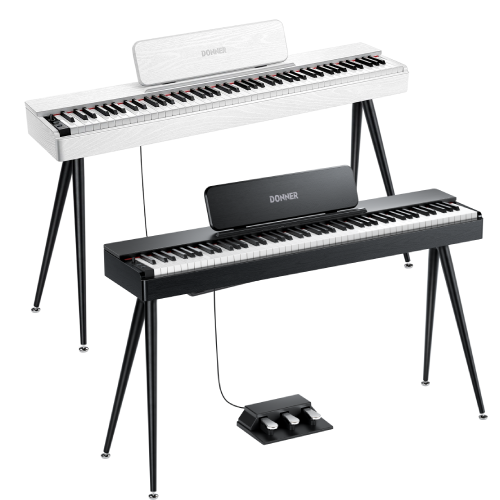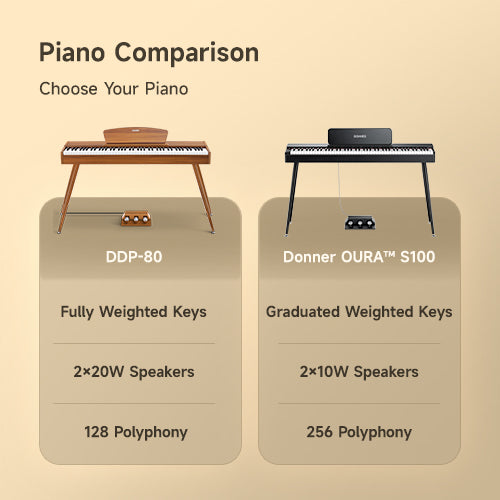Introduction
In the manufacturing of electric guitars, the choice of wood is crucial as it directly affects the tone performance of the guitar. Common woods for electric guitars include maple, mahogany, and rosewood, etc. The following will detail how these woods influence the tone of electric guitars.
Maple
Visual Features
Maple usually has a light color, ranging from pale white to light brown. Its grain is clear and relatively uniform, with a unique beauty that often gives a clean and bright visual impression. It is used in the making of necks and bodies of many electric guitars.
Price Ranges
The price of maple varies depending on factors such as variety, grade, and origin. Generally, ordinary maple has a relatively moderate price, while some high-quality, special-grained or from specific origins, like top-grade Canadian maple, has a relatively higher price.
Wood Properties
Maple has a relatively high density and is hard in texture, which gives it good stability and durability. It can withstand the tension of the strings without deforming easily, providing reliable structural support for the electric guitar.
Tone Characteristics
Electric guitars made of maple have a bright and crisp tone, with a prominent high-frequency response. The sound has good penetration and a grainy feel, making the notes clear and powerful when playing music styles like rock or pop, and standing out easily in a band mix.

Mahogany
Visual Features
Mahogany is mostly reddish-brown to dark brown in color, warm and shiny. Its grain is usually fine, with a natural beauty and elegant charm, and is often used to make the bodies of electric guitars, showing a unique vintage charm.
Price Ranges
The price of mahogany varies according to variety and quality. Generally, ordinary mahogany has a moderate price, but high-quality varieties like Honduran mahogany have a relatively higher price due to their scarcity and excellent quality, which are favored by the market.
Wood Properties
Mahogany has a moderate density and is relatively soft and lightweight. It has good resonance properties and can effectively transmit the vibration of the strings, making the sound warmer and fuller.
Tone Characteristics
Electric guitars made of mahogany have a warm and soft tone, rich in midrange, with a certain thickness and elasticity in the low frequencies. These tone characteristics make it perform excellently when playing music styles like blues or jazz, creating a warm and mellow musical atmosphere.

Rosewood
Visual Features
Rosewood is darker in color, ranging from dark brown to nearly black. Its grain is complex and irregular, with unique grain patterns, giving an elegant and noble visual effect. It is often used to make the fingerboards of electric guitars, increasing the aesthetics and texture of the instrument.
Price Ranges
The price of rosewood varies greatly. Ordinary rosewood is relatively affordable, but some rare varieties like Brazilian rosewood are extremely expensive. Since it is under international protection, its acquisition and use are strictly restricted and it is rare in the market.
Wood Properties
Rosewood has a high density and hardness, good wear resistance and stability. It also has a high oil content, which helps to improve the tone performance and service life of the wood.
Tone Characteristics
Electric guitars with rosewood fingerboards have a warm and rounded tone, with soft high frequencies, full midrange, and deep and resonant low frequencies. When playing music styles like classical or folk, it can present a detailed and rich tone hierarchy, making the music more expressive.

Outro

In conclusion, the three common woods, maple, mahogany, and rosewood, have different visual features, price ranges, wood properties, and tone characteristics. When choosing an electric guitar, you can consider your personal playing style, preferences, and budget to find the most suitable type of electric guitar wood and thus obtain the ideal tone effect.
























